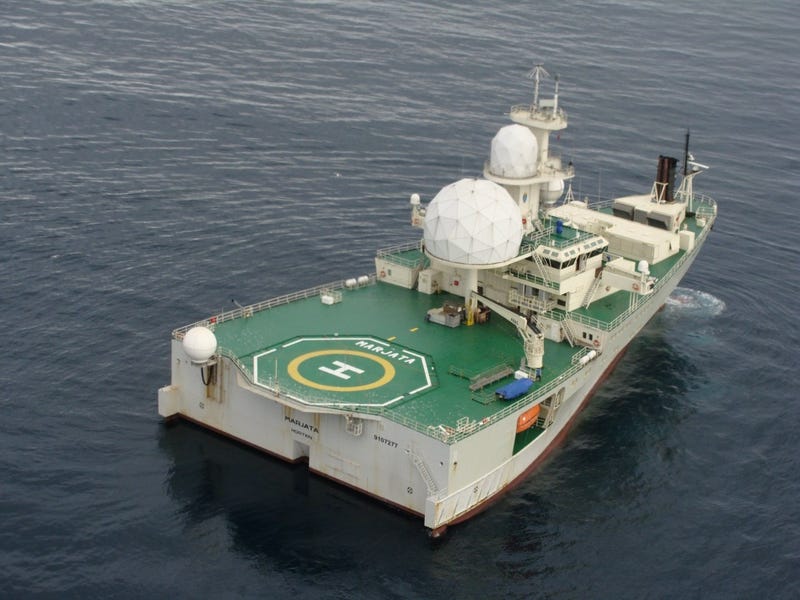That doesn't mean that Yamato's TDS is ineffective. The fact that no US BB was sunk underway is not due to a superior TDS only that there was a larger battlefleet screening them so that they get torpedo less.Yamato's TDS was the only WWII era TDS design that failed to take advantage of elastic deformation theory and membrane deformation theory. Yamato's TDS was also the only one which failed to take advantage of the role of liquid loaded compartment in increasing the effrctivess of TDS and decreasing the listing moment generated when TDS is hit.
Prince of Walse and Pennsylvania were crippled by torpedo hits on propeller shafts, and Bismarck by a hit on the rudder. so neither speak to the effectiveness of the TDS. Wreck examination shows neither bismarck's nor POW's Torpedo bulkheads were ruptured. This shows their TDS were successful.
The bunker fuel in the torpedo bulkhead as dampers were typically not replenished with sea water as intended as the fuel was spent. so in practice there isn't much difference between a bunker fuel assisted TDS or not.
the internal TDS used by the British, German and the US in their treaty battleships suffered from smaller protected area than the torpedo bulges used on the Japanese ships. It is relatively easier to have a torpedo not hit them as shown on the POW, West Virginia, Bismark and hit somewhere else.
The Yamato's bulkheads were armored and therefore not elastic. This was done to resist spall and sharpenel from penetrating the internal bulkheads like a shot gun. The understanding that the yamato's bulkhead was too rigid and did not elastically defrom is by USS Skate torpedoing the Yamato causing a 11m diameter hole / deformation with 3000 ton of water intake. It is also true that the elastic and fuel oil filled USS North Carolina TDS was punch through by a torpedo on Sept 15, 1942 which created a 36 ft hole / deformation (~12m). This made her lose 150,000 gal of fuel and to correct list, she was counter flooded thus reducing her max speed to 18 knots from 28 knots.
The fact is both system did work, though the designer of the Yamato expected more resistance. IIRC Yamato did not lose speed after the torpedo hit as it was an external blulkhead not an internal one. i.e. minimum counter flooding is required. In her final battle, it took 4 torpedo to start to reduce Yamato's speed.
I am not saying that the Yamato's TDS is good, it did its job and with all engineering solutions, there are trade offs. There is a reason why the TDS on the planned USS Montana went to a more Yamato design with a outward bulge and an inner armor plate. Now American welding technology in 1945 would be much better than Japanese riveting technology in 1937. Point I am making is, the internal system is a compromise based on the Washington treaties, Yamato's design is not inherently flawed, but the technology to make it is not there yet.

You can't really compare and say one design is better.
I don' t argue i understand fine gentsbut seems yes Yamato design etc... is less modern than Iowas and even eventualy precedent classes but this enomous War machine still amazing ! and as passionate we love these terribles machines !
A little comparison Kongo was a honnest BB in fact Battle Cruiser fast but not very well protected used especialy for escort the Kidō Butai/ 1st Air Fleet the first dedicated Air Naval Force never created,
Kongo do 32000 t It looks almost like a dwarf ! and Suzyua one of the superb Japanese heavy cruiser still 15000 t
Yamato is especialy impressive for its width and main turrets size a monster ! in addition a look enough unusual small island elegant, Iowa very long and very" slender".
Why Yamato also width there are a lot of room around turrets a reason ?
How many rounds for main turrets for Yamato and Iowa please ? i think at less 1000.
View attachment 38135
Forbin, Yamato carried around 100 rounds per gun, i.e. roughly 900 rounds total. max would be around 120 rounds per gun.
There are 2 school of thought in aspect ratio design. the bismark and yamato is beammy because they had to reduce overall draft of the ship. this way they also produce very stable gun platforms but the ship have a slightly more pronounced roll. The British and American flavored narrower ships due to canal locks restrictions (also why they don't like torpedo bulges) and for the structural integrity of the hull. basically as the hull is deeper, it becomes a stronger beam as its moment of inertia is larger. therefore you need less structural strengthening i.e. weight. the ships pierce the waves more for better controllability in heavy seas but they make very wet bows.
Here is the extreme end of wave piercing design

and the extremely beammy design



